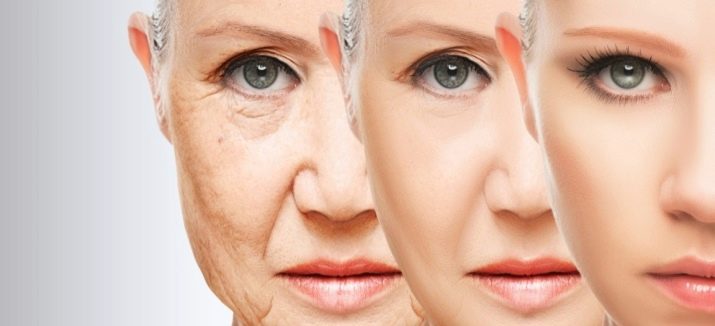The centuries-old experience of using medicinal herbs is worth listening to even in our high-tech age, because nature itself gives us beauty and health in its plants. One of them is sage. This is a universal phyto-assistant in many areas. This article will tell you about the properties of sage oil and how to use it.

Healing and beneficial properties
People learned about the miraculous properties of sage long ago. An unpretentious plant grew on stony soil throughout Asia, in the Center and in the south of Europe, in the territory of the modern Caucasus. Thanks to the spicy aroma that sage gives to essential oils, it was originally used as a culinary seasoning, but soon they began to receive essential oil from the aerial parts of the plant to achieve beauty and medical purposes.
Fragrant sage oil has a bright, catchy smell. It captures freshness and nutty tones (especially in clary sage), as well as notes of camphor and ambergris. In addition to the unique aroma, sage oil concentrate has a number of useful properties.
- Anti-inflammatory effect - The first and main property of sage oil, with the ensuing properties of an antiseptic, a natural antimicrobial and antibacterial agent. It is used for disinfection both externally to problem areas and with internal inflammation of a bacterial nature. It is also effective in fighting infections.
- Antifungal property. Camphor esters inhibit the growth and division of cells of a fungal infection.
- Antioxidant effect. Returns skin elasticity, pushing back the internal and external aging processes.

- Antispasmodic. It is used for pain caused by spasms, to relieve muscle tension, to relieve cough and cramps.
- Cholagogue and digestion-improving action. Sage oil stimulates the outflow of bile and has a beneficial effect on the entire gastrointestinal tract: reduces acidity in the stomach, eases heartburn, and helps prevent gastritis and ulcers, preventing pathogenic microflora from multiplying in the intestines.
- Bronchodilator. Since ancient times, sage and its oil have been used to better discharge sputum, protect the bronchi and lungs.
- Antipyretic. In colds accompanied by fever, sage oil can relieve them.
- Light diuretic and laxative effect It has an oil extract of sage due to the ability to remove excess fluid. The same property can lower high blood pressure.
- Stimulating and immunomodulating. The product activates the work of all internal systems and organs - the liver, kidneys, circulatory and nervous systems, improves memory and brain activity. In women, it stimulates the production of female hormones, establishes the cycle of menstruation, reduces their profusion, eliminates apathy and PMS syndromes. The male body helps to produce testosterone.
Sage oil has the qualities of an aphrodisiac for both sexes and contributes to the overall strengthening of immunity.


Structure
Sage essential oil is obtained from the leaves and flowers of a plant using the steam distillation method. There are three varieties of this unique plant - medicinal sage, white and nutmeg. The resulting oil ether from each of them differs in its properties and purpose. Oil extracts of white sage are used mainly in perfumes and aromatherapy, it is not widespread. Nutmeg oil combines aromatic and medicinal properties, and medicinal oil is the leader in the maintenance of substances useful for health and beauty.
Despite modern chemical technology, the full composition of sage oils remains a mystery to scientists. More than 20 active substances contained in the plant go into the created oil product. Among them are the following:
- salviol, sclareol, barniol - natural alcohol compounds, which are powerful natural disinfectants;
- linel acetate is an essential compound used in perfumes to preserve the fragrance;
- camphor, thujone, cineole, zest - a number of aromatic substances that create a specific aroma of clary sage;
- fellandren, caryophyllene - the main components of essential oils;
- glycerides, flavonoids, alkaloids, several tannins.

Application options
Sage oil is used internally and externally for many health problems and to preserve beauty. It is used as an independent ingredient in medical procedures, and in combination with other oil esters. In folk recipes, oil from the medicinal and nutmeg varieties of the plant can be used.
ethnoscience
A thin layer of ethereal sage concentrate is applied to wounds, cuts, pustules. It is able to cure skin dermatitis, psoriasis.
In the season of respiratory diseases, sage oil is used for rinsing and inhalation. The active substances contained in it kill viruses and microbes (including staphylococci, streptococci with angina) in the nasopharynx, can be used to treat and prevent throat diseases. For daily 2-3 rinses, you need to mix 3-4 drops of oil in 200 ml of warm water with 1 \ 2 teaspoon of soda and the same amount of honey.
If honey is excluded from this recipe, then such a rinse is effective for dental problems - gingivitis, periodontal disease. It relieves toothache, eliminates unpleasant odors.
If you need to reduce gum disease, you should mix 3-4 drops of the essential product with a teaspoon of honey. This mixture should be applied to the inflamed gum with a finger or with a cotton swab 2-3 times a day.


For inhalation, it is enough to inhale the vapors of oil directly from the bottle or by dropping a couple of drops into a special aroma pendant. In addition to the therapeutic effect, inhaling sage ester improves mood. For children and adults, it is effective to conduct 5-minute sessions of hot inhalations twice a day - breathe over a bowl of hot water and 2 drops of sage oil for 10-14 days during complex treatment or for the prevention of acute respiratory viral infections.
Young mothers who have decided to stop lactation will help sage oil extract. To gradually reduce milk production, you need to drink 4-5 cups of tea per day with 2-3 drops of miracle oil. Such a decision should be agreed with a specialist.
In the absence of contraindications, ingestion of 1 drop of sage oil extract daily is sufficient for 10-14 days, taking breaks of 1-1.5 months. A drop of ether is diluted with several drops of any vegetable oil, the mixture is applied to bread or cracker, eat it. You can also add a drop directly to tea. Taking oil from clary sage inside helps lower blood pressure, while extract from the medicinal variety raises it. The medicinal oil taken internally has a beneficial effect on the intestines, lowers gas formation, relieves spasms, and has a positive effect on the nervous and circulatory systems and the functioning of internal organs.
Traditional medicine recommends the use of sage oil for aromatization and disinfection of indoor air. A couple of drops per 10 square meters is enough. m, applied to a special sponge to improve mood, relieve nervous tension, regain strength, ceased to hurt the head. For the same purpose, you can take a warm bath with 2 drops of clary sage oil.


Cosmetology
In matters of beauty, sage essential oil is recognized as a reliable assistant. Using it for the face, you can achieve cleansing and narrowing of the pores, reduce inflammation, acne, toning and rejuvenating the skin. At home, you can use the following recipes.
- For dry skin. Mix raw yolk of chicken egg with honey (1 \ 2 tsp), drip 2-3 drops of oil, apply evenly on face and neck, keeping it for 20-30 minutes. This mask eliminates dryness, gives softness after two use.
- For oily skin. In a bowl, grind the banana pulp, add 1 teaspoon of clay for the skin, 3-4 drops of sage oil, 1 \ 2 teaspoon of lemon juice. Soak on the skin for 20-25 minutes, repeat every other day. After 5-6 procedures, the skin will become dull, velvety without oily sheen.
- Lifting mask. Dry herbs - chamomile, lavender, sage, take 1 scoop, add a little boiling water to make pulp, and 2-3 drops of sage oil. Apply the mixture warm on the skin in a prone position, keep for 20 minutes. Plant extracts tone the skin, restore firmness and elasticity.


Also, sage oil restores shine, silkiness to the hair, eliminates dandruff, especially if they are damaged by staining and thermal procedures. The following recipes for hair are most effective.
- Dry hair can be healed using the following mask: 1 egg yolk mixed with 1 spoon of mayonnaise, 1 spoon of brandy, 1 \ 2 tablespoons of honey, 5 drops of sage oil. Soak under a warming cap on the hair for 30-40 minutes before washing.
- Normalizes oily hair essential oil in combination with bergamot oil and citrus oil extracts. Such a mixture must be applied to the scalp once every 7-10 days.
- Reduce hair loss the following mixture applied to the hair 2-3 times a week: onion juice - 2-3 tablespoons, burdock oil - 2 tablespoons, 4 drops of sage oil. Apply the heated mixture with massage movements to the scalp. This mask will additionally eliminate dandruff, accelerate hair growth.
It is possible to enrich your usual daily face, hair and body care products with medicinal substances by adding 4-5 drops of sage ether to them.Familiar shampoos, hair balms, face and hand creams or a facial cleanser will gain a lot of healing properties that will positively affect the appearance of their owner.


Contraindications
Like any drug with a high content of active ingredients, there are contraindications for sage essential oil. First of all, these include an allergic reaction of the body and intolerance to its components. In this regard, it is recommended to test the skin reaction before the first use of the oil. The test consists in applying diluted sage oil (water or other vegetable oil 50 to 50) on the elbow. Follow the condition of the skin will need to be within 24 hours.
If redness is observed, itching and peeling appear, then do not use sage oil externally. Before using sage essential oil inside, it is advisable to consult with a medical specialist about the advisability of taking it. Absolute contraindications for internal use of sage oil are:
- pregnancy and lactation;
- children's age up to 7 years;
- spasmodic arterial pressure;
- epileptic seizures;
- impaired thyroid function;
- exacerbation of kidney disease.
It is not recommended to use sage essential oil for people intoxicated. In order to avoid side effects, the dosage of the use of ether must be observed. Undesirable side effects may include inflammation and swelling of the mucous membranes, impaired renal function, tachycardia, convulsions, vomiting, rapid breathing, dizziness.



Reviews
Among people who used sage oil for different purposes, positive reviews prevail. Most of the improvements are seen with its outdoor use. Women and girls talk about improving the condition of the skin of the hands, eliminating its dryness after they added 5-6 drops of oil to the hand cream. Gargling helps a lot with the first symptoms of the disease with this oil "doctor", and also reduce sweating with it. An important point remains compliance with the dosage and regularity of use of the essential product.
However, caution should be exercised, because sage ester can cause irritation and aggravation of health due to potent components. Moreover, one should not independently decide to use it inside without consulting with a qualified specialist.
See how to make sage essential oil in the next video.










